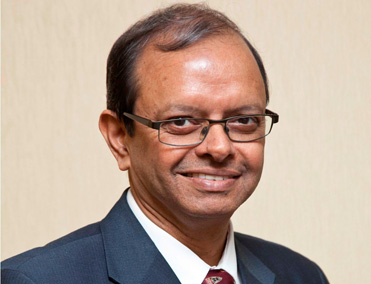Issue No.10 / June 16,2015

Getting more done in less time, is truly an art that can massively enhance the productivity of the corporate world and needs assiduous practice and planning
The biggest bane of our country’s culture, particularly in the way business is transacted is the wasteful time spent before and after meetings in drinking tea, chatting about inconsequential niceties and beating around the bush. This culture also pervades in the Middle East, where as my first JV partner in Bahrain told me “you use the first meeting to talk about family, the second to speak about business in general and only state your purpose in the third meeting.” Fortunately in the IT sector in India, we have all become used to the more direct American culture where a majority of the business is transacted through mails and telephone calls, and face to face meetings or presentations, when they do happen tend to be very focused and to the point.
My own training in time management started early when I joined Crompton Greaves as a management trainee in the eighties. The Managing Director, KK Nohria was a role model for all of us and one of the most important things we learnt from him was time management. KKN, as he was known would never schedule meetings for more than fifteen minutes and in the fifteenth minute he would actually get us from his chair, signaling unambiguously that he had heard what you had to say and if you didn’t use the time productively, you had only yourself to blame. In the last twenty years, I have made this a practice at Zensar and my previous company, APTECH. In a case study that was written about Zensar and is taught regularly at Harvard Business School, one of our VPs at the time is quoted as saying that the team knows they have limited time to state their case but the discipline gets them quick decisions and has become a culture across the organisation. I am seriously considering how to make stand-up five minute meetings the new norm for the organisation!

There will always be times when the short meeting norm cannot be upheld and there is no purpose served by being dogmatic about this, but eighty percent of meetings completed in half the usual time provides the window for important discussions to replace the urgent!
The virtue of brevity can also be extended to all other forms of communications. Avoiding the use of presentations in a multi- participant panel discussion at a conference always enhances the conversation and leaves adequate time for audience interaction. Frowning on long business mails with voluminous attachments ensures that people who want a decision summarise their thoughts and asks into two succinct and well- crafted paragraphs in an e-mail. And limiting the time available to every presenter in a conference to six to eight minutes in a predetermined and agreed format ensures that the messaging is crisp and outcomes are easier to achieve.
There are many individuals in all walks of life today who embody these values. Mr. KK Nohria’s son Professor Nitin Nohria, the first Indian Dean of Harvard Business School is a role model for many HBS alumni with the precision of his thought processes and the focus in his verbal and written communications. Pune’s Municipal Commissioner Kunal Kumar, CII President for Western Region Sanjay Kirloskar and NASSCOM President Chandrasekhar are all practitioners of the effective art of time management. And none better than Prime Minister Modi to show that much more can be accomplished by robust action than excessive deliberations in committees and councils
The time has come for all of us to make more productive use of time – our own and everybody else’s!
By Ganesh Natarajan